induction heating principle
Views
INDUCTION HEATING was first noted when it was found that heat was produced in transformer and motor windings, as mentioned in the Chapter “Heat Treating of Metal” in this book. Accordingly, the Principle of induction heating was studied so that motors and transformers could be built for maximum efficiency by minimizing heating losses. The develop- ment of high-frequency induction power supplies provided a means of using induction heating for surface hardening. The early use of induction involved trial and error with built-up personal knowledge of specific applications, but a lack of understanding of the basic principles. Through- out the years the understanding of the basic principles has been expanded, extending currently into computer modeling of heating applications and processes. Knowledge of these basic theories of induction heating helps to understand the application of induction heating as applied to induction heat treating. Induction heating occurs due to electromagnetic force fields producing an electrical current in a part. The parts heat due to the resis- tance to the flow of this electric current.
Resistance
All metals conduct electricity, while offering resistance to the flow of this electricity. The resistance to this flow of current causes losses in power that show up in the form of heat. This is because, according to the law of conser- vation of energy, energy is transformed from one form to another—not lost The losses produced by resistance are based upon the basic electrical formu- la: P i2R, where i is the amount of current, and R is the resistance Because the amount of loss is proportional to the square of the current, dou- bling the current significantly increases the losses (or heat) produced. Some metals, such as silver and copper, have very low resistance and, consequent-
6 / Practical Induction Heat Treating are very good conductors. Silver is expensive and is not ordinarily used
for electrical wire (although there were some induction heaters built in WorldWar II that had silver wiring because of the copper shortage). Copper wires are used to carry electricity through power lines because of the low heat losses during transmission. Other metals, such as steel, have high resis- tance to an electric current, so that when an electric current is passed through steel, substantial heat is produced. The steel heating coil on top of an electric stove is an example of heating due to the resistance to the flow of the house- hold, 60 Hz electric current. In a similar manner, the heat produced in a part in an induction coil is due to the electrical current circulating in the part.
Alternating CurrentandElectromagnetism
Induction heaters are used to provide alternating electric current to an elec-
tric coil (the induction coil). The induction coil becomes the electrical (heat) source that induces an electrical current into the metal part to be heated (called the workpiece). No contact is required between the workpiece and the induction coil as the heat source, and the heat is restricted to localized areas or surface zones immediately adjacent to the coil. This is because the alternating current (ac) in an induction coil has an invisible force field (elec-
Fig. 2.1 Induction coil with electromagneticfield. OD, outside diameter; ID,
inside diameter.Source:Ref1
Theory of Heating by Induction
tromagnetic, or flux) around it.When the induction coil is placed next to or
around a workpiece, the lines of force concentrate in the air gap between the coil and the workpiece. The induction coil actually functions as a trans- former primary, with the workpiece to be heated becoming the transformer secondary. The force field surrounding the induction coil induces an equal and opposing electric current in the workpiece, with the workpiece then heat- ing due to the resistance to the flow of this induced electric current. The rate of heating of the workpiece is dependent on the frequency of the induced current, the intensity of the induced current, the specific heat of the material, the magnetic permeability of the material, and the resistance of the material to the flow of current. Figure 2.1 shows an induction coil with the magnetic fields and induced currents produced by several coils. The induced currents are sometimes referred to as eddy-currents, with the highest intensity current being produced within the area of the intense magnetic fields.
Induction heat treating involves heating a workpiece from room tempera- ture to a higher temperature, such as is required for induction tempering or induction austenitizing. The rates and efficiencies of heating depend upon the physical properties of the workpieces as they are being heated. These properties are temperature dependent, and the specific heat, magnetic per- meability, and resistivity of metals change with temperature. Steel has the ability to absorb more heat as temperature increases. This means that more energy is required to heat steel when it is hot than when it is cold. Table 2.1 shows the difference in resistivity at room temperature between copper and steel with steel showing about ten times higher resistance than copper. At 760 °C (1400 °F) steel exhibits an increase in resistivity of about ten times larger than when at room tempera- ture. Finally, the magnetic permeability of steel is high at room temperature, but at the Curie temperature, just above 760 °C (1400 °F), steels become nonmagnetic with the effect that the permeability becomes the same as air
Resistance
All metals conduct electricity, while offering resistance to the flow of this electricity. The resistance to this flow of current causes losses in power that show up in the form of heat. This is because, according to the law of conser- vation of energy, energy is transformed from one form to another—not lost The losses produced by resistance are based upon the basic electrical formu- la: P i2R, where i is the amount of current, and R is the resistance Because the amount of loss is proportional to the square of the current, dou- bling the current significantly increases the losses (or heat) produced. Some metals, such as silver and copper, have very low resistance and, consequent-
6 / Practical Induction Heat Treating are very good conductors. Silver is expensive and is not ordinarily used
for electrical wire (although there were some induction heaters built in WorldWar II that had silver wiring because of the copper shortage). Copper wires are used to carry electricity through power lines because of the low heat losses during transmission. Other metals, such as steel, have high resis- tance to an electric current, so that when an electric current is passed through steel, substantial heat is produced. The steel heating coil on top of an electric stove is an example of heating due to the resistance to the flow of the house- hold, 60 Hz electric current. In a similar manner, the heat produced in a part in an induction coil is due to the electrical current circulating in the part.
Alternating CurrentandElectromagnetism
Induction heaters are used to provide alternating electric current to an elec-
tric coil (the induction coil). The induction coil becomes the electrical (heat) source that induces an electrical current into the metal part to be heated (called the workpiece). No contact is required between the workpiece and the induction coil as the heat source, and the heat is restricted to localized areas or surface zones immediately adjacent to the coil. This is because the alternating current (ac) in an induction coil has an invisible force field (elec-
Fig. 2.1 Induction coil with electromagneticfield. OD, outside diameter; ID,
inside diameter.Source:Ref1
Theory of Heating by Induction
tromagnetic, or flux) around it.When the induction coil is placed next to or
around a workpiece, the lines of force concentrate in the air gap between the coil and the workpiece. The induction coil actually functions as a trans- former primary, with the workpiece to be heated becoming the transformer secondary. The force field surrounding the induction coil induces an equal and opposing electric current in the workpiece, with the workpiece then heat- ing due to the resistance to the flow of this induced electric current. The rate of heating of the workpiece is dependent on the frequency of the induced current, the intensity of the induced current, the specific heat of the material, the magnetic permeability of the material, and the resistance of the material to the flow of current. Figure 2.1 shows an induction coil with the magnetic fields and induced currents produced by several coils. The induced currents are sometimes referred to as eddy-currents, with the highest intensity current being produced within the area of the intense magnetic fields.
Induction heat treating involves heating a workpiece from room tempera- ture to a higher temperature, such as is required for induction tempering or induction austenitizing. The rates and efficiencies of heating depend upon the physical properties of the workpieces as they are being heated. These properties are temperature dependent, and the specific heat, magnetic per- meability, and resistivity of metals change with temperature. Steel has the ability to absorb more heat as temperature increases. This means that more energy is required to heat steel when it is hot than when it is cold. Table 2.1 shows the difference in resistivity at room temperature between copper and steel with steel showing about ten times higher resistance than copper. At 760 °C (1400 °F) steel exhibits an increase in resistivity of about ten times larger than when at room tempera- ture. Finally, the magnetic permeability of steel is high at room temperature, but at the Curie temperature, just above 760 °C (1400 °F), steels become nonmagnetic with the effect that the permeability becomes the same as air
Next: Clamp induction Coil_3Previous: What is Induction Heating?
Good
Bad
Related Content
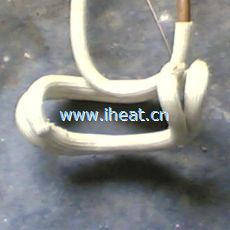
various special shape of induction coils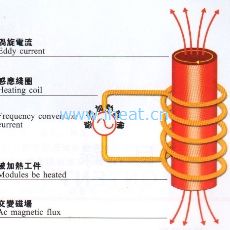
What is Induction Heating?
Portable Heater Head of Induction Heating Machine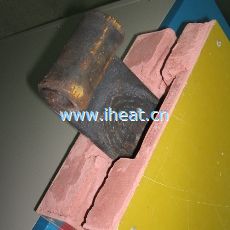
custom-build box shape induction coil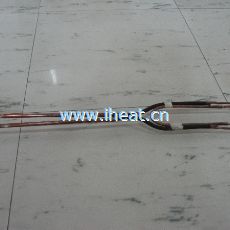
custom build induction for heating surface of steel plate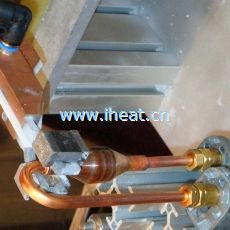
U Shape Special induction coils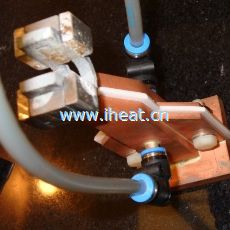
U Shape Special induction coils2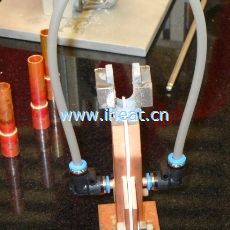
U Shape Special induction coils1

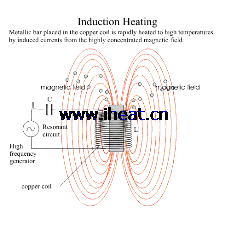
Newest Comment
No Comment
Post Comment